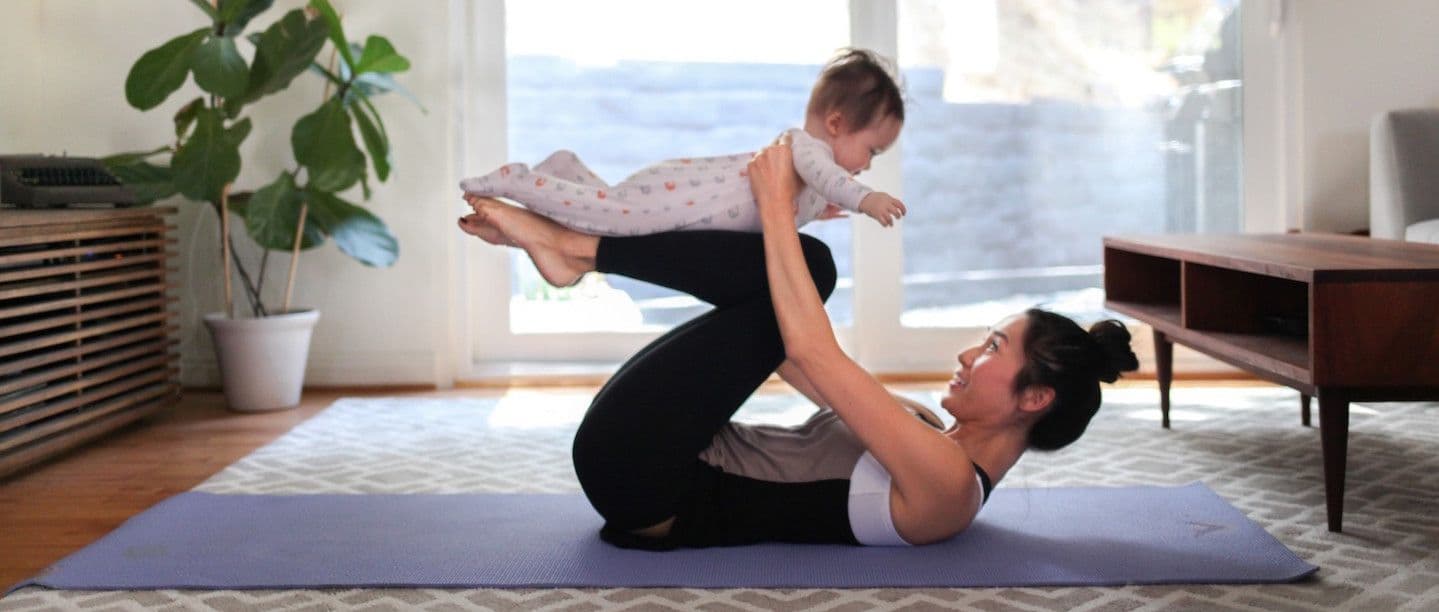Postpartum Exercise: What Is Safe?
Postpartum
Obie Editorial Team

If you want to start exercising right after delivery, you can go ahead as long as you feel OK and there are no contraindications. Speak with your doctor if there are any concerns. When to start exercising after the birth of a baby depends on the woman's state of health. The AMerican College of ObGyn has a great guideline for exercise in pregnancy and postpartum. There are no absolute wait times to start exercise. A woman who has exercised throughout pregnancy and had an uncomplicated delivery is likely ready earlier than someone without too much exercise depending on the kind of exercises.
Benefits of postpartum exercise
Postpartum exercise is beneficial both physically and psychologically for most new mothers. It helps work off the extra pounds gained during pregnancy while increasing energy levels and improving self-esteem.
Postpartum exercise often improves the pains that are normal in the postpartum period. They strengthen your muscles and get you ready for more intense exercises later on. You might want to make sure and talk to your doctor before starting an exercise program.
Before you start
Start off slowly. Make sure you don't get overtired. Whichever exercise you do, each movement should be made slowly and smoothly, do it with caution and moderation. Most women won't be able to get immediately into the same routine practiced before pregnancy since the body needs time to recover from pregnancy.
Two special exercises, Kegels and the pelvic tilt or pelvic rock, should be included in the postpartum workout. Kegels are done by repeatedly squeezing and then releasing the muscles of the pelvis around the genital area while standing, sitting or lying down. Kegels help a woman regain control of sphincter muscles.
Good postpartum exercises
The following are suggestions on postpartum exercise from the American College of Obstetricians and Gynecologists:
- First, talk to your doctor about an exercise plan appropriate for you. He or she may suggest a plan based on the type of delivery you had, if you're anemic or overweight, or not used to exercising.
- Begin slow and easy with special attention on adequate warm up and cool down sessions. A gentle, low-intensity, five minute warm-up period like slow walking or low-resistant stationary cycling will help prepare the body for exercise. Start with 15 to 30 minutes of low to moderate aerobic activity like dancing, walking, bicycling, swimming, rowing or cross-country skiing. Keep the heart rate below 140 beats per minute,
- Don't extend the joints or stretch to the point where it causes pain. The high level of hormones remaining in a woman's body after childbirth leaves muscles and ligaments soft and joints unstable so exercise gently. Avoid jerky, bouncy movements, and working out on a hard surface like concrete, avoid rapid changes in direction, since balance may still be affected,
- Keep exercises low-impact. For example, keep one foot on the floor during aerobics, or march rather than hop, wear an athletic bra for added support, and schedule exercise sessions immediately after breastfeeding when the breasts are not as large, avoid competitive exercise or overexertion until the body has had time to return to normal, which usually takes 6 weeks, include strengthening exercises for the abdomen, back and legs, including modified sit-ups to strengthen stomach muscles. Modified sit-ups are done with the knees bent and the curl up being gradual, rather than sitting up all the way. Sit-ups done with the legs straight are extremely stressful to the lower back.
How often should I exercise?
General exercise tips apply to postpartum exercise as well. Regular exercise of three times per week is always better than exercising every once in a while, avoid vigorous exercise in hot, humid weather, and drink plenty of water before and after exercising to avoid dehydration. If it's difficult to find the time for exercise, take a walk while pushing the baby in a stroller, or seek out local hospitals or family-centered health clubs with postpartum classes and babysitting services. Several postpartum workout videos also are available that take the physical needs and condition of new mothers into consideration. However, it is important to choose a medically sound exercise program. Some exercise programs marketed to pregnant and postpartum women are based on inaccurate or incomplete medical data. Therefore, before starting to use a video exercise program, it is always a good idea to check the specific program out with your doctor.
If you experience any of the following symptoms, you should stop exercising and contact your doctor immediately:
- Pain
- Increased bleeding
- Dizziness
- Shortness of breath
- Heart palpitations
- Faintness
- Difficulty walking











